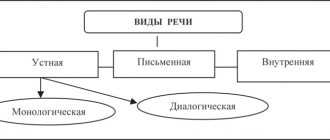Such a variety of etiological factors for speech impairment indicates the need for parents to take their children’s speech problems seriously, since in some cases they may indicate serious pathologies, including those of the brain. A timely visit to a qualified pediatric speech therapist will help identify the reasons for the lack of speech or its underdevelopment in the child, and prescribe adequate treatment and correction.
In the speech therapy departments for children of the NEARMEDIC network of multidisciplinary clinics, pediatric speech therapists of the first and highest qualification categories, who have scientific titles and many years of practical experience in correcting speech in the absence or underdevelopment of a child in the best domestic and foreign clinics, advise.
For young patients, the NEARMEDIC network of clinics provides the opportunity, if necessary, to consult with any specialists in the field of pediatrics - neurologists, psychologists, otolaryngologists, as well as undergo all the necessary instrumental and laboratory examinations in the network’s own multifunctional laboratories, equipped with the latest technology.
The most modern physiotherapeutic technologies influencing articulation equipment are available to children.
An integrated approach to the treatment of children in the absence of speech or its underdevelopment gives excellent results in such speech pathology as alalia, preventing the development of secondary intellectual disability in the child.
Speech disorders in children
All forms of speech-language pathology were initially described by physicians because initial descriptions involve clinical intervention. However, these are isolated studies (S.S. Mnukhin, E.I. Kirichenko, A.N. Kornev). Children with various complaints about speech disorders often first go to the doctor, who then refers them to a speech therapist. Accordingly, all research on speech disorders is in the field of speech therapy.
Unlike adults, children independently and spontaneously master language while being in a full-fledged language environment. This is hard and serious work that requires the use of a wide range of cognitive abilities:
- language and intellectual capabilities;
- planning skills;
- ability to concentrate and switch attention;
- states of articulatory praxis, etc.
All this is necessary to master the language. If cognitive abilities are limited and immature, then it will be difficult for a child to learn to speak independently without the help of a specialist.
Epidemiology
The sooner a problem is identified, the easier it is to cope with it - correctional work and medical and psychological assistance will be more effective. Today, in speech therapy, speech disorders are identified at the age of 5-6 years and later.
There are a lot of children with speech disorders in Russia:
| Russia | English-speaking countries | |
| 5-6 years | 25-30% | 4-5% |
| 7-8 years | 17-20% | 3% |
| Over 8 years old | 1% | 1% |
| Boys/girls | 3:1 | 2:1 |
The table shows the percentage of those children who have speech deficiencies that require specialist intervention. By about 6 years of age, children fully master language skills in terms of pronunciation and grammar. Before this, they are allowed to make certain mistakes, according to their age. However, it is important to understand that each age has its own acceptable and unacceptable speech errors.
If we compare with English-speaking countries, the difference is quite noticeable. This large gap is related to diagnostic criteria, not to the children's abilities. Nevertheless, the number of children with speech disorders is quite large. Most often boys suffer from the pathology.
Causes of dysontogenesis
The nature of the development of speech pathologies is traditional. Reasons include:
- Constitutional (hereditary) forms. It occurs most often; most speech disorders have a hereditary factor.
- Somatogenic forms. A child aged 1-2 years suffered some serious illness for his age. If the disease occurs during a sensitive period for speech, this may affect the full development of speech.
- Cerebral-organic forms. They develop as a result of pathologies during pregnancy or difficult childbirth.
- Deprivation forms. Emotional and communicative deprivation, which in most cases occurs among residents of orphanages and orphanages.
- Forms of mixed genesis. Combine two or more of the above forms.
Primary speech therapy examination
Let us describe how the initial examination of the OHP is carried out. First, the speech therapist gets acquainted with the notes of the child neurologist and pediatrician. Clarifies the features of the course of early speech development.
Then he diagnoses oral speech and determines the degree of formation of the language system. Studies the state of coherent speech: composing a story from a picture, retelling.
Examines the correctness of word formation, coordination of parts of speech and sentence construction. Determines the vocabulary and ability of children to correctly name objects or phenomena.
Studies the sound side of speech: the structure and motor skills of the speech apparatus, sound pronunciation, syllable structure and sound content of words. Determines abilities for phonemic perception, sound analysis and synthesis. Conducts diagnostics of auditory-verbal memory and other mental processes.
The conclusion helps to determine suitable correction techniques
The result of the examination is a speech therapy report. It reflects the level of speech development and the clinical form of speech disorder.
For example: level 2 OHP in a child with a motor form of alalia.
The diagnosis after “ONR” must necessarily indicate what clinical diagnosis is causing the speech underdevelopment. The conclusion helps determine appropriate corrective techniques.
Partial PNR
PND stands for primary speech underdevelopment. Classification of partial PNR:
- Functional dyslalia. These are defects in individual sounds that can be easily eliminated (in a couple of weeks/months).
- Articulatory dyspraxia (dysphonetic, dysphonological and dynamic forms). It represents polymorphic pronunciation disorders that are associated with a violation of cerebral support, i.e. with inferiority at the neurobiological level. Dyspraxia may be accompanied by problems with vocabulary and grammar. Requires longer correction.
- Developmental dysarthria. The causes of dysarthria are pathologies during pregnancy and birth trauma.
- Rhinolalia. These are serious speech disorders that occur due to the incorrect structure of the dentofacial apparatus.
- Dysgrammatism. It manifests itself in selective violation of the rules of grammar, agreement of words by gender, number, cases, etc. Reflects exclusively the grammatical side.
This classification is notable for its clinical focus. That is, it can be used by both speech therapists and doctors.
In addition to partial speech disorders, secondary speech underdevelopment is also distinguished. They are associated with pathologies of physical and mental development (for example, hearing impairment, mental retardation, mental retardation, etc.).
Causes and risk factors
Children with motor alalia are usually born with this pathology. The causes most often are various injuries and pathological processes that occur during the intrauterine development of the child. During pregnancy the following can cause harm:
- alcohol;
- sudden changes in hormonal levels;
- infections;
- falls and injuries;
- placental abruption;
- depression, constant stress.
Alalia can also cause problems in the first years of a child’s life. Brain damage is caused by:
- weak contractions and unsuccessful birth;
- breathing problems immediately after birth, due to which the brain does not receive enough nutrition;
- severe hypothermia of the newborn.
The disease can also develop after suffering from rubella, meningoencephalitis, severe head injuries and bruises, and due to somatic pathologies.
Total PNR
With total speech impairment (TSI), there are deficiencies in all areas of the language: phonology, sound pronunciation, grammar and vocabulary. The child's mastery of all language means is generally impaired.
The disorders presented in the classification are classified as severe:
1. Alalic variant (motor and sensory alalia). With motor alalia, a child under 4-7 years of age does not use speech, except for a set of babbling words (for example, woof-woof, co-co, bi-bi). The child cannot fully communicate, which entails serious impairments in communication capabilities. It is relatively rare - 0.5%.
Sensory alalia is an even more severe condition in which the child does not understand spoken speech and does not connect words with meaning. The disease has been little studied and is difficult to diagnose. Correction not started in time (from 2-3 years of age) can cause serious maladaptation and lead to disability.
2. Paraalalic version of THP. The symptoms and signs are similar to motor alalia, but it proceeds much easier and is overcome more quickly (in 2-3 years).
3. Clinical forms with a complex type of disorder (“mixed”).
If by the end of preschool age it is not possible to cope with dysontogenesis, the child is sent to study at a speech school. To achieve noticeable results, correction work must continue for at least 5-6 years. A regular school can only aggravate the child’s condition: serious difficulties will arise in learning, and a lack of oral speech causes deficiencies in written language.
Comorbidity
Total PND is characterized by a high comorbidity rate. 60-70% of children with sound pronunciation disorders have problems with attention, memory and the emotional sphere. 50% of children with dyslexia and 60-80% of children with mental retardation or mental retardation have oral speech disorders.
Speech impairment is quite often accompanied by many disorders:
1. Cognitive deficit:
- random access memory;
- verbal-logical functions (the ability to think categorically using generalizing concepts);
- successive operations;
- finger and articulatory praxis;
- attention (auditory, rarely visual);
- immaturity of gaming competence.
2. Personal sphere:
- surface of social connections;
- immaturity of the emotional-volitional sphere.
3. Communicative competence:
- poor command of dialogue (especially monologue);
- difficulties in establishing partnerships.
The lack of language means limits the possibility of mastering verbal and logical skills in thinking. This can affect the personal sphere, because difficulties arise in communicating with peers and adults. If the child received timely and comprehensive help, the outcome will be more favorable. Comprehensive care means both the participation of a speech therapist and the participation of doctors.
Dysontogenesis is dangerous with negative consequences. The child has difficulties in learning in basic subjects, there is an inferiority of socio-cultural discourse and behavioral disturbances. It is worth talking separately about dyslexia and dysgraphia, since these are the most serious disorders that follow speech impairment.
Conclusions. Expert advice
Children with motor alalia have a chance for a normal life if their parents did not let everything take its course. The disease can be identified at the age of 3 years, when the problem is completely correctable. First of all, it is necessary to make a diagnosis and confirm it with several doctors. So, an audiologist should give his opinion, because alalia is in many ways similar to ordinary deafness.
Treatment of the disease must be comprehensive. During diagnosis, its cause is determined and a course is prescribed. Afterwards, the child must be given medications, attend a physiotherapy room, classes on general manual motor skills, etc. Stimulating speech activity with a speech therapist plays a significant role.
Remember that the prognosis for alalia, although it depends on the degree of brain damage, is determined by proper treatment. Timely identification of the problem and the use of all available methods of therapy can often completely eliminate motor alalia and significantly reduce the impact of sensory alalia on the child’s life.
Dyslexia through the eyes of a doctor
Dyslexia as an independent disorder was first described at the end of the 19th century by English ophthalmologists. The pathology was defined as word blindness - the child is intellectually developed, but cannot recognize words. In Russia, such cases were first described by R.A. Tkachev and S.S. Mnukhin.
Dyslexia is a specific reading disorder. About 10% of children experience difficulties mastering reading during their school years. Compared to other children, they are not able to learn to read in the proper time. After finishing school, many of them remain semi-literate.
Dyslexia is a condition whose main manifestation is a persistent, selective inability to master the skill of reading, despite a sufficient level of intellectual and speech/language development, the absence of hearing and visual impairments, and optimal learning conditions.
Diagnostic criteria according to ICD-10 – F81.0. Specific reading disorder.
Signs of dyslexia:
- Reading technique and/or reading comprehension is below what is expected for given intellectual development. First, there is a slow development of syllabic reading, and then slow reading in words, which greatly complicates the understanding of texts. Both in the lower grades and in the older grades, the child automatically reads most of the words syllable by syllable.
- The disorder is not a direct consequence of a visual or hearing defect, or a neurotic disorder.
Symptoms of dyslexia vary by language. In the English language, dyslexia can be recognized by incorrect reading and a huge number of errors, in the Russian language - by extreme slowness and automation.
Epidemiology of dyslexia
This pathology has been poorly studied in Russia, while in English-speaking countries millions of books and articles have been written on the topic of dyslexia, and in the USA the problem was discussed at the Congress level. The results of a survey conducted by the Association of Parents of Dyslexics showed that the vast majority of parents and more than half of teachers in Russia do not have the slightest idea about dyslexia. In fact, dyslexic children are left to their own devices and do not receive the necessary help. There are a lot of such children:
- in the Russian population of school-age children 5-6%;
- L/m ratio: severe forms – 1:4.5, medium form. heavy – 1:1.5;
- among children with mental retardation – 50%
- among children with speech underdevelopment – 40-50%.
5-6% on a Russian scale is approximately 700-800 thousand children. After finishing school, they feel like foreigners in their native country, since they cannot work with texts. These are huge numbers and from this side dyslexia becomes a socially significant problem.
Dyslexia is characterized by sexual dimorphism in favor of boys. Dyslexic boys are many times more common than girls.
Cerebral mechanisms of dyslexia
Reading is a rather labor-intensive process that develops certain brain structures. Dyslexics have difficulty reading because their brains have serious developmental features - malformations or ectopia, when neurons are located in the wrong place where they are supposed to be. This study was conducted by Galaburda in 1985. Look at fig. 1 - everything that is indicated in red are numerous zones of ectopia.
Rice. 1.
The dyslexic brain shows signs of dysembryogenesis. MRI can identify typical, recurring abnormalities in certain areas of the brain. In Fig. 2 yellow-red color shows a decrease in gray matter density in dyslexics, and blue color shows an increase. These are also signs of dysontogenesis, which are most often found in the left temporal lobe of the posterior part of the middle temporal gyrus.
Rice. 2.
Functional MRI can identify key areas of the brain involved in text processing. Look at fig. 3 – while reading, a normally reading child activates 3 key zones, highlighted in red: superior temporal, frontal and inferior temporo-occipital. In dyslexics, only one zone is allocated, and the temporal and temporo-occipital areas are not involved in information processing - this is a sure sign that the brain is not working imperfectly. Dyslexia can be improved with special exercises and rehabilitation.
Rice. 3.
In Fig. Figure 4 shows a graph of reading pace changes. In the 6th grade, children reach a plateau, that is, reading in pace and speed does not change and remains unproductive until graduation.
Rice. 4.
Psychopathological symptoms in dyslexia
This pathology occurs in conjunction with various psychopathological syndromes. Among them:
- cerebrovascular disease;
- attention deficit disorder;
- mental infantilism syndromes;
- ADHD;
- intellectual-mnestic deficiency;
- neurosis-like and neurotic syndromes;
- reading phobia;
- school phobia;
- delinquency.
All these problems arise due to psychological maladjustment. Persistent problems can deform the personality in the process of its formation and lead to sad results. Dyslexia interferes with the learning process, and children experience such difficulties painfully. Features of the social situation of a dyslexic child:
- chronic failure;
- chronic frustration (reading phobia, school phobia);
- disharmony of parent-child relationships (secondary);
- low social status among peers;
- restrictions in choosing a profession;
- inaccessibility of higher education.
Unfortunately, the school often does not notice that the child has problems and does not meet them halfway. Even parents do not realize the full danger of the situation and add problems to the child by getting annoyed and scolding him for poor performance. As a result, the child’s maladaptation only intensifies.
According to statistics, the social status of adults with dyslexia is much lower than that of other people. This is quite natural, because mastering a profession and competition in the labor market for dyslexics is a tough environment where they lose. Features of the social situation of an adult dyslexic:
- cultural development of the individual - as in the pre-literate era;
- cultural deprivation due to deprivation of cultural discourse through texts;
- social discrimination, which is caused by illiteracy.
Treatment of motor alalia
The rehabilitation program should be aimed at the full development of the child’s motor skills. During treatment, specialists focus on the patient’s thinking and ability to remember information. Correction methods in this case are aimed at visualization, improving sound-letter productions, and developing the ability to concentrate. The set of prescribed measures affects the stimulation of speech and its meaningfulness, the increase in vocabulary and the correct development of speech.
Treatment and correction methods are being developed by many highly specialized specialists.
Rehabilitation of children with dyslexia
It is important to begin providing assistance in a timely manner, in grades 1-2, to compensate for dyslexia and prevent social maladjustment. Help should be comprehensive:
- psychological and pedagogical correction of reading disorders;
- drug treatment: nootropics (Nootropil, Phenotropil, Pantogam, Cortexin, Semax, etc.);
- psychotherapeutic assistance in the family.
To master reading skills, a child needs to study with specialists and do additional homework. All this can be combined on the online platform SLOGY.RU, where studies take place in a distance learning format.
Diagnostics
Diagnosis of OHP requires an integrated approach.
A speech therapist directly assesses speech development, but before visiting this specialist it is necessary to undergo a medical examination with the participation of a neurologist, pediatrician and, in some cases, an otolaryngologist. During the consultation, the specialist gets to know the patient and conducts a speech therapy examination, which includes two stages. First, the speech therapist talks with the parents, clarifying the features of the baby’s development, the time of the appearance of humming, first words, etc. Contact is established with the little patient, and in the process of communication the work of the articulatory apparatus is assessed. The speech therapy examination itself includes an assessment of the formation and coherence of speech, active and passive vocabulary.










